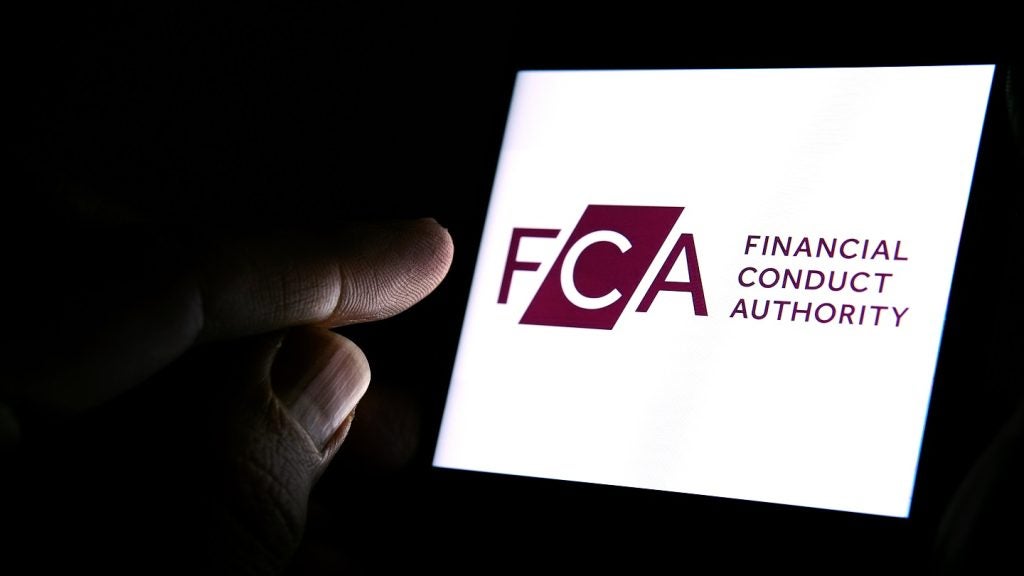talks to V Vaidyanathan, ICICI’s executive director responsible for
retail banking. Over the past eight years, ICICI’s consumer banking
unit has grown from 60 employees to 26,000, and Vaidyanathan says
the group is profiting from an explosive mix of banking innovation
and an increasingly wealthy mass market.
ICICI Bank, recent winner of the Most Exciting Emerging Markets
Bank at the Retail Banker International Awards (see
RBI 589), is clearly the bank to watch in India. From an itch
that the slower public banking behemoths couldn’t quite reach when
it first entered the industry less than 15 years ago, ICICI Bank
has grown to be a sizeable competitor in the last five years.
Now the largest private sector bank and second-largest in India,
ICICI dominates market share across an array of retail banking
products such as two- and four-wheeler financing and general
insurance.
ICICI’s senior management team has gone through an overhaul
recently as part of a succession planning exercise for when K V
Kamath, the current chief executive officer, ends his tenure in
2009. Chanda Kochhar, a widely respected retail banker, was
promoted from joint managing director to chief financial officer of
the bank with an additional charge for its corporate centre. She
will also be the official spokesperson for ICICI Bank and is widely
tipped to lead the bank one day.
RBI spoke to V Vaidyanathan, executive director on the
board of ICICI Bank responsible for retail, small- and
medium-enterprise and rural banking, who was in London to receive
the award on behalf of the bank in April. An ex-Citibanker,
40-year-old Vaidyanathan joined the bank in 2000 as the managing
director of ICICI’s consumer finance arm, ICICI Personal Financial
Services.
“I have been in consumer banking since the beginning and we have
come a long way. We had about 50 to 60 employees when I started and
we are now 26,000-strong,” he said. His division now has over 25
million customers, $35 billion in consumer customer assets and over
1,000 branches with a presence in the deepest parts of India. The
consumer banking division contributes about 50 percent of the
bank’s revenues.

US Tariffs are shifting - will you react or anticipate?
Don’t let policy changes catch you off guard. Stay proactive with real-time data and expert analysis.
By GlobalData“Consumer banking is important but it’s not just the numbers. What
it has done to the bank is to make it very resilient because
consumer banking business behaviour is very stable – it doesn’t
fluctuate. It doesn’t swing either way dramatically in terms of
profits or book size. This lends a lot of predictability to the
whole business,” he qualified.
This is not to say that the consumer banking business is boring; it
is anything but, he stresses. Double-digit growth rates across
consumer banking products are expected to continue as the economy
is expected to grow by more than 8 percent this year.
“In many ways, we have moved quite fast with the opportunities that
India has provided,” says Vaidyanathan. “With the fast economic
growth, jobs are created and the new generation of consumers are
willing to try new ways of banking. In a short span of time, they
are earning more income but do not have enough time to manage their
new-found wealth. This is a great opportunity for ‘efficient
banking’. So when we launched mobile banking, for example, the
take-up was amazing.”

20 percent of transactions online
The evolving Indian consumer banking mindset has helped to support
ICICI’s commitment to improve efficiency in banking via better
technology. The bank rolled out 1,000 ATMs in 2002 when most of its
peers were still focusing on branches. It offered online banking
services in 1997 when internet penetration was still very limited,
but now 20 percent of its consumer transactions are online.
Vaidyanathan believes that “if the Indian customer had not evolved,
or if the new India had not been created, our business model would
not have worked. We are bankers for the new India: they are willing
to bank with us differently. Their needs are very different and we
need to respond very, very quickly”.
He adds: “Our mobile banking facility, called iMobile, is an
innovation we have brought to the Indian market. Most banks provide
mobile banking as a way of providing information.
“For example, if you withdraw cash at an automated teller machine
you will get a text message. However, we launched mobile banking to
enable transactions. It is not just about low costs for the bank,
it is about customer convenience.”
The facility allows most internet banking transactions to be
conducted through mobile phones. Customers can transfer funds to
ICICI and non-ICICI Bank accounts and the application covers
savings banks, credit card and loan accounts. Customers can also
pay their utility bills and insurance premiums through this
facility.
According to Vaidyanathan: “Before we launched this version of
mobile banking, we had about six million customers registered on an
earlier [m-banking] version. It is too early to comment on take-up
numbers for the new service but I am confident that the numbers
will look significant in the years to come: maybe 20 percent of all
financial transactions will be through the mobile phone.”
Branches needed to boost growth
That is not to say branches have taken a back seat. ICICI Bank’s
managing director and chief executive officer, K V Kamath, has said
that more branches are needed to boost the bank’s growth
trajectory. “Branch licensing needs to be liberalised in the
country,” he has commented.
The bank will have an estimated 1,400 branches in operation by May
2008, still a mere fraction of the 10,000 branches that the largest
public sector bank and its close competitor, State Bank of India,
now boasts. However, the experience of the foreign banks in India
clearly illustrates that a large branch network is not necessarily
the key to success in the market. While they account for less than
1 percent of the total branch network, their share of deposits and
advances stands at about 7 percent.
Investing in the branch network is not enough by itself. We will
invest in the technology that will allow us to leverage the network
to the fullest. For example, we provide anywhere banking, 8am-8pm
physical banking and so on. Customers get used to our internet
banking, and this helps us create sticky customers,” Vaidyanathan
points out.
Rising business costs will affect any branch expansion plans.
“Indian urban property prices have reached or even surpassed the
prices in developed countries. So we need to be selective in
opening new branches, and to derive the most from the network,” he
says.
“However, with the fast rate of customer acquisition, we need to
keep upgrading the back-end systems to be more flexible. An open
platform is necessary in this scenario.”
A relative slowdown
Although there is still double-digit growth, the Indian consumer
banking market is seeing a relative slowdown.
Consumer loan loans grew 20 percent year-on-year in November 2007
compared with 40 percent in March 2006, largely due to a slowdown
in mortgages, which account for 51 percent of retail loans. Housing
loans grew 15 percent year-on-year in November 2007 compared with
38 percent in March 2006.
“ICICI Bank’s market leadership in retail and international banking
makes it more vulnerable in the current downturn than most other
banks,” says Prabodh Agrawal, an analyst with IIFL Research. “Its
operational outlook has deteriorated, given its significantly large
forex credit-linked position; dependence on overseas lending to
grow its loan book; large share of capital market-related income;
and continued vulnerability of its domestic retail loan book to
rising defaults. A slower growth trend may be a blessing, as it
would provide ICICI Bank an opportunity to build up its deposit
base and improve net interest margin, thereby improving the return
on equity.”
Agrawal added that ICICI’s loan growth decelerated sharply in the
last six quarters and says he now expects the slowdown to continue
into FY09. “Growth in retail loans, which account for two-thirds of
the bank’s loan book, has slowed down significantly – to just above
10 percent year-on-year – and the bank does not expect a reversal
of the trend, unless borrowing costs come down materially.”
The bank is increasing its focus on deposits and fee-based income
to improve its net margin. According to Vaidyanathan, “consumer
lending will always be important. The needs of a home or a car will
always remain as basic needs”.
“But consumer banking is not only consumer lending. The less
discussed area is the growth in liabilities. In the higher interest
rate scenario, liability has become a significant play and in fact
the profit pools are bigger in the liability side. Our focus is
very high on the liabilities side and this provides good
opportunities for wealth management, insurance and fee-based
services. Fee income is likely to outgrow interest income and we
are seeing growth rates of 50 percent in the business.
“Growth percentages have tapered off because interest rates have
gone up, but I don’t see the credit quality issue. But it is better
to be cautious. We’ve tightened our screens for all businesses
using sophisticated analytics,” he says.
While the Indian banking sector remains fragmented, with the top 10
banks accounting for 65 percent of the market, Vaidyanathan does
not discount the possibility of an acquisition in the near future.
He says: “Banks will look for such opportunities but hopefully at
the right price. The banking system will look for such
opportunities to scale.”
An area that the bank is targeting is in banking for the rural
masses that make up 70 percent of India’s population. “I see a
significant opportunity in unexplored markets. I am confident we
will get the model right with experimentation and education. We are
exploring many models, some with our own branches, some with
partner organisations to make the most of existing network
structures,” he says.

Ample liquidity
Vaidyanathan does not think that the current global
crisis will affect the bank’s business. “There is no credit crunch,
there is ample liquidity in India. In fact, jobs are being created
that will translate to wealth in people’s hands. The effect of the
global credit crunch in India is that people will reallocate their
portfolio from loading on equities to deposits.”
India is already a major market for foreign banks such as Standard
Chartered – India contributed 17 percent of Standard Chartered’s
2007 profits and profits before tax grew by 71 percent in 2007 for
the bank’s Indian operations. Other banks making a serious play in
India include HSBC, Barclays, Deutsche Bank, Royal Bank of Scotland
and Citi (the latter has an 11.75 percent stake in the HDFC
Group).
“We feel pretty bullish – cyclical issues come and go whether it is
the stock market or global trends. But structurally India is on a
good path. So there will always be opportunity for growth in India.
This will be the story of India for decades,” Vaidyanathan says
with the enthusiastic optimism characteristic of retail bankers in
the second fastest-growing economy in the world.







